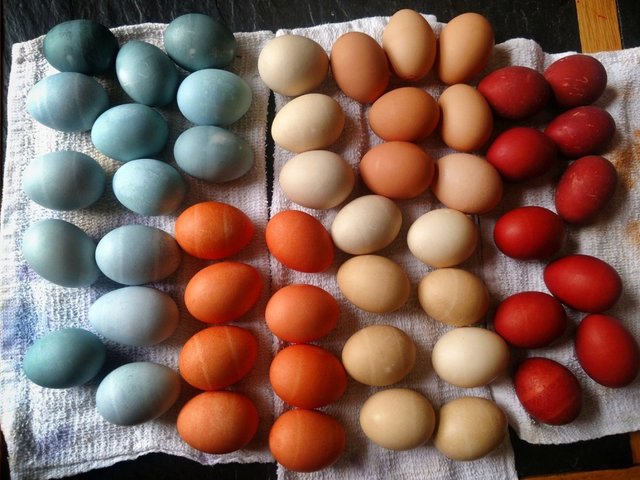Well, here’s a Jacob Grimm you may not have heard : ) As a philologist studying Germanic folk customs, Grimm speculated that the custom of Easter eggs may have stemmed from springtime frolics in honor of Eostre—the Proto-Indo-European goddess of dawn. If so, it’s just one more in a longtime legacy of eggs and the ancients. 60,0000 year old decorated ostrich eggs have been found in Africa. Rituals connecting eggs and rebirth go back 5000 years or more in Egypt, Sumeria and Mesopotamia. And historians tell us Christians in the latter culture were the first to dye eggs ritualistically, coloring them red as a reminder of blood.
Today, egg-decorating has launched into all sorts of glittery, fluorescent-hued territory—fun, though not particularly appetizing. The idea of eating chemically-dyed anything has always been a bit suspect. That, plus the appeal alchemy has on me prompted me to try my hand at using easily-found kitchen ingredients to naturally dye eggs.
I’ve been so pleased with the results! Using coffee, onion skins, red cabbage, and a little vinegar I was able to produce a lovely array of hues: Blue from the cabbage, orange and red from the onion skins and warm beiges and taupes from the coffee.

This article is written by Monica Kass Rogers
To read the full published article, read here at Artisans List -A Business Listing Website.
Warning! This user is on my black list, likely as a known plagiarist, spammer or ID thief. Please be cautious with this post!
If you believe this is an error, please chat with us in the #cheetah-appeals channel in our discord.
Downvoting a post can decrease pending rewards and make it less visible. Common reasons:
Submit